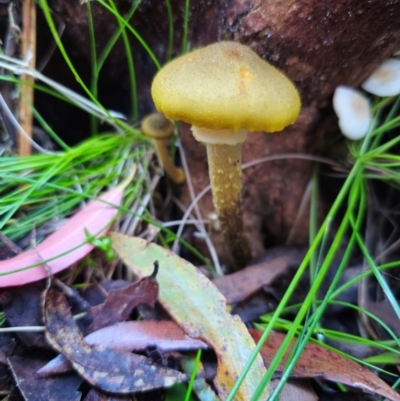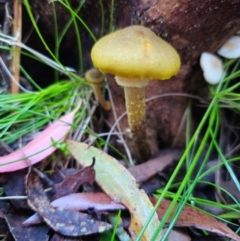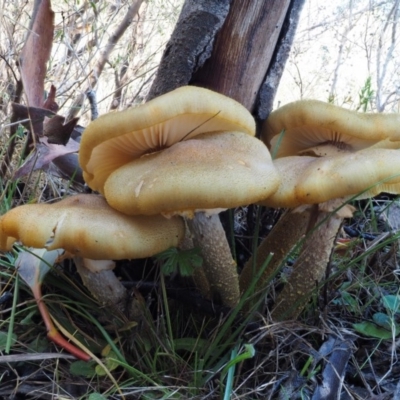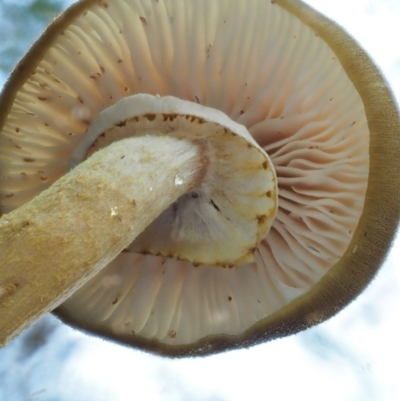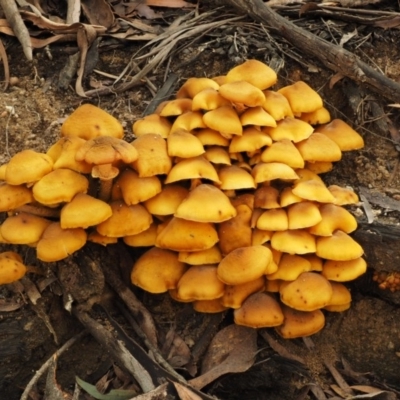Armillaria luteobubalina (Australian Honey Fungus)
The fruit bodies of Armillaria luteobubalina are mushrooms in which the cap is held atop a central stem. The mushrooms grow from live or dead wood and often appear in dense clusters with overlapping caps. Caps may grow to ten centimetres in diameter and may be a dull or drab yellow-green, yellow-brown to brownish, with a scattering of tiny dark scales that give the surface a rough feel. The gills are cream coloured and the stem (up to 20 centimetres long and two centimetres wide) may be greyish-yellow to brown.
An immature mushroom has a partial veil (a membrane that covers just the gills). As the cap opens out this membrane breaks and the bulk of it is left as an annulus (a ring or skirt of tissue) on the upper part of the stem. Sometimes there is also a remnant left as a raggedy edge to the margin of the cap. The annulus is white with yellow scales on its underside.
Spore print: white. With overlapping caps, many spores released from the gills of one cap will fall onto the surface of the cap below and so it is to see a white spore deposit on the lower of two caps.
Armillaria luteobubalina is a parasitic fungus that attacks and kills a wide variety of native and exotic plant species. Since it is referred to as the Australian honey fungus, people do mistake Gymnopilus junonius for it, since the Gymnopilus has a very honey-like rich golden brown cap. The mushrooms of that species also grow from wood, have partial veils and usually appear in dense clusters of overlapping caps. However, the spore print of Gymnopilus is rusty brown.
Armillaria luteobubalina is listed in the following regions:
Canberra & Southern Tablelands | South Coast
Species information
- Armillaria luteobubalina Scientific name
- Australian Honey Fungus Common name
- Not Sensitive
- Local native
- Non-invasive or negligible
- Up to 1369.8m Recorded at altitude
- Machine learning
- External link More information











